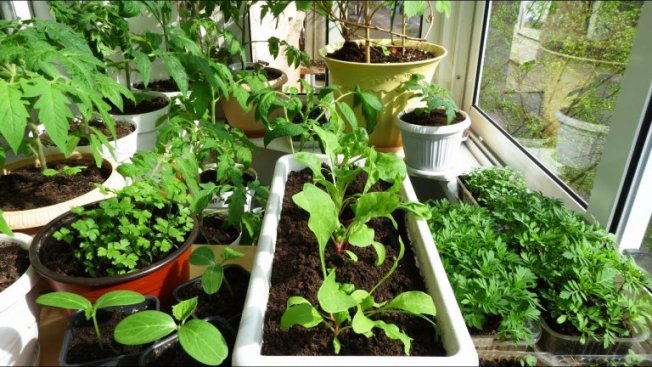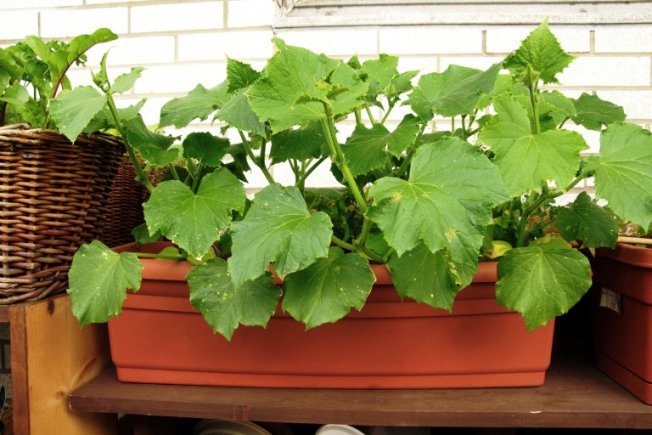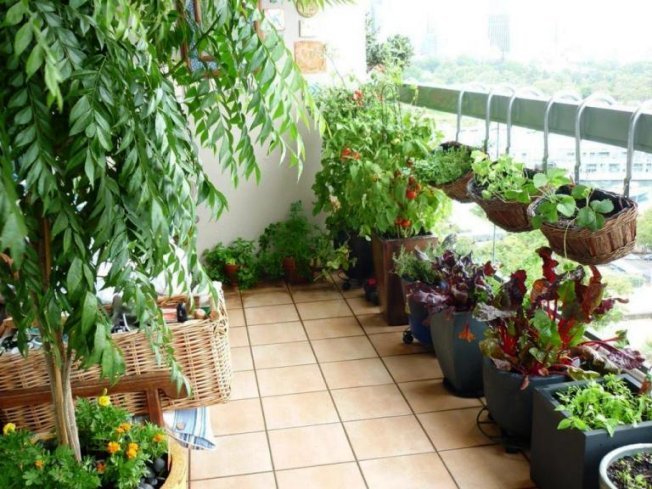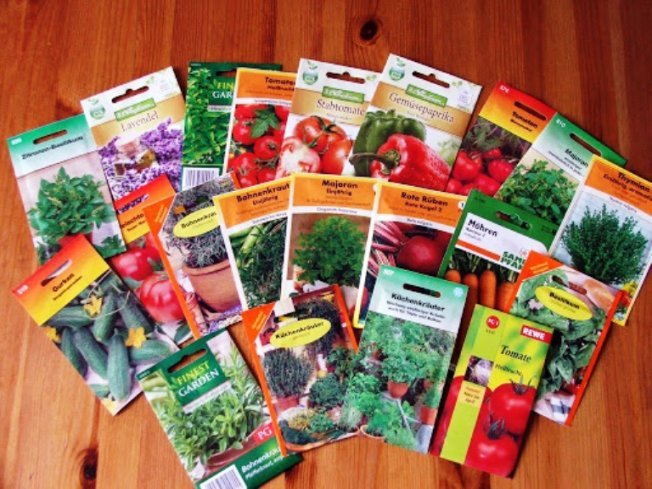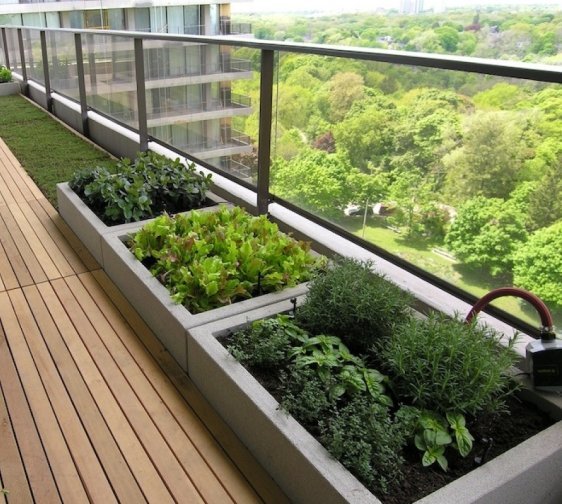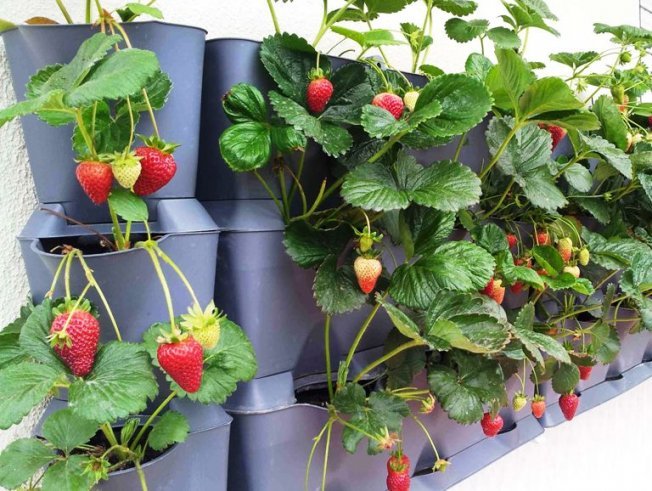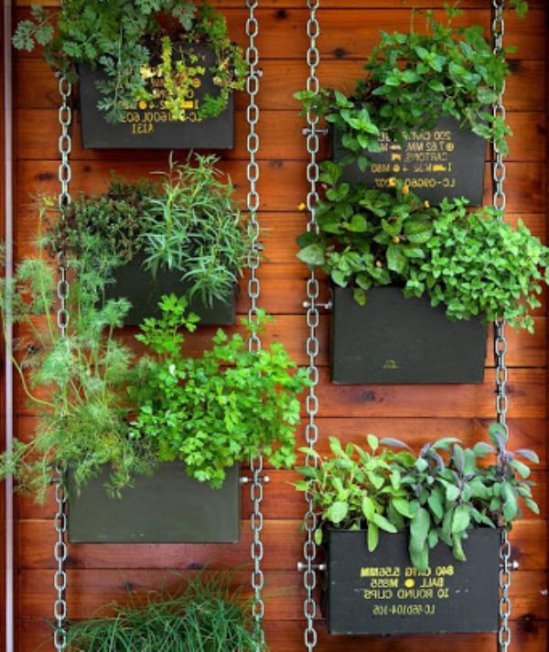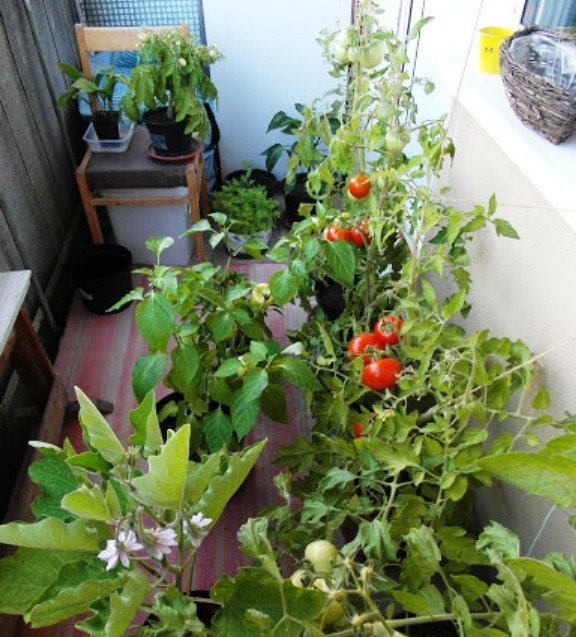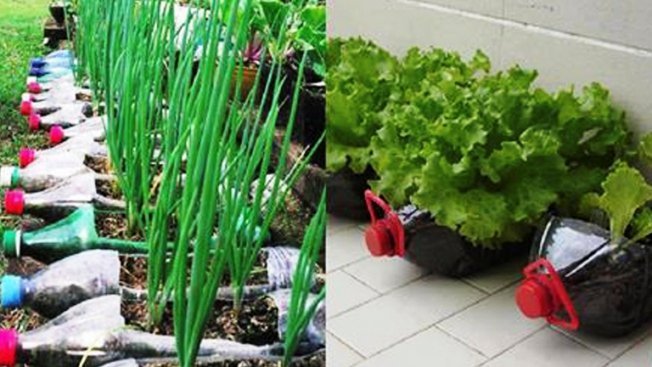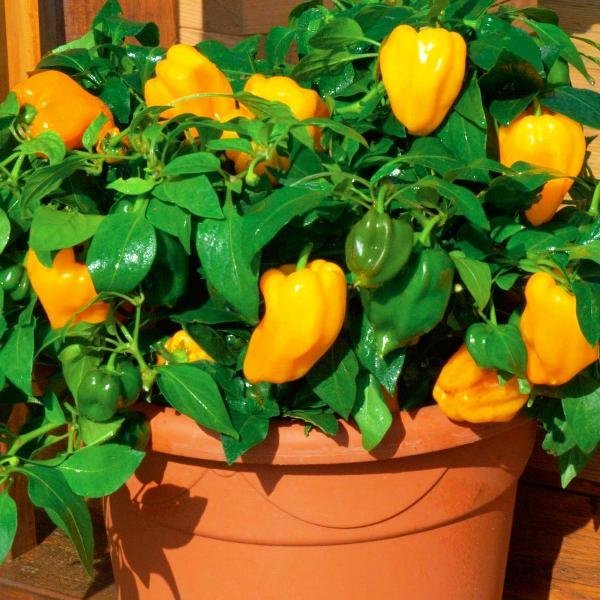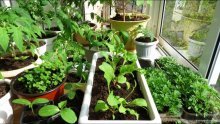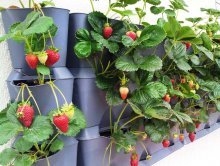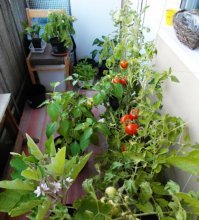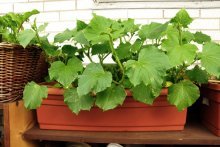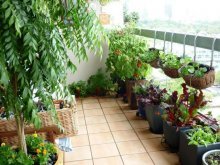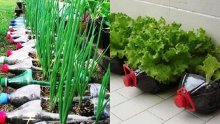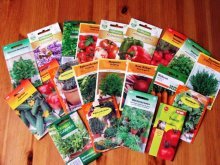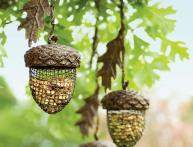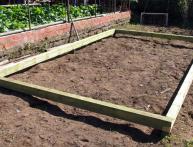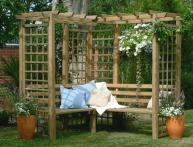Vegetable garden on the balcony for beginners, very detailed, with photos and videos

How to plant a vegetable garden on a balcony for beginners should be described in great detail.
This idea is useful, but only those lovers of fresh vegetables can implement it who can properly plan balcony beds, and also learn the basic methods of caring for crops selected for growing on a balcony.
Content:
- How to properly plan a mini garden on the balcony with your own hands
- How to make a vegetable garden on the balcony with your own hands: preparation
- What crops can be grown
- What seeds to buy
- Soil for a mini garden
- Containers for growing vegetables: selection criteria
- Organization of beds
- Where to start: gardening on the balcony for beginners, in great detail
- Vegetable garden on the balcony in plastic bottles
How to properly plan a vegetable garden on a balcony with your own hands
Before you start work, you should think everything through carefully. First of all, determine the size of the balcony or loggia and decide how much space can be devoted to green space. Depending on the degree of lighting, you can determine what crops can be grown on it.
It should be taken into account that some of them cannot develop and bear fruit normally in conditions of constant shade, i.e. on the balcony facing the north side of the house.
The balcony itself will require some preparation.You will need to figure out where it will be possible to place containers with plants; you may have to make shelves or racks, gratings for hanging structures.
You also need to study which plants can be placed nearby and which ones are not friendly with each other.
To simplify the task, you can draw a diagram and indicate on it the location of each plant, this will be more clear.
Do not forget that the plants will require care, that is, access to each of them is a must. In addition, in the summer, plants will require daily watering and periodic loosening of the soil.
How to make a vegetable garden on the balcony with your own hands: preparation
You can start planting plants only with the onset of warm weather, i.e. in April-May. Since the timing of planting on a glazed balcony can be moved forward by a couple of months, it is still more rational to think about glazing.
If the balcony is already glazed, then you will need to equip it with lighting if it faces the north side, or curtains if it faces the south.
You should definitely install a thermometer, focusing on its indicators and it will be easy to determine deviations from the optimal temperature recommended for growing your crops. Those. you can turn on the heating in a timely manner when the temperature drops significantly, or shade the plants from the sun in case of very hot weather.
What crops can be grown on the balcony
The list of plants suitable for growing on the balcony includes:
- onions and garlic for greens,
- basil, dill and parsley,
- salads and celery, mint and lemon balm,
- sweet and hot peppers, tomatoes and cucumbers,
- radishes, peas and beans.
You can try growing strawberries and wild strawberries from the berries.
It should be noted that for tall crops it will be necessary to build supports.
What seeds to buy
When choosing seeds, you should first of all pay attention to varieties intended for indoor gardening.
In particular, these may be:
- cherry tomato varieties Kish-mish or Micron,
- cucumbers Courage and Balcony Miracle,
- sweet pepper Watercolor,
- hot super chili pepper,
- strawberry Homemade miracle.
Soil for a balcony garden
It is easier for a city dweller to buy ready-made soil; it goes on sale in a network of specialized stores and supermarkets.
But if you have the opportunity and desire, you can prepare the mixture yourself, taking into account the requirements of the plants that you are going to grow.
The soil mixture for vegetables should consist of:
- 5 parts peat,
- 1 part soil
- 3 parts humus.
You can follow other recipes:
- humus 2 parts, earth - 1 part;
- earth - 1 part, sand - 1 part, humus - 2 parts.
If it is possible to use turf soil, then to 1 part of it you can add 7 parts of humus and 1 part of mullein. Or add 1 part of turf soil to 2 parts of humus.
The advantages of earthen mixtures rich in humus are obvious: the plant will not require organic fertilizing throughout the entire growing season. This will greatly simplify care and help increase the yield of vegetable crops.
Containers for growing vegetables on the balcony: selection criteria
When choosing containers, you can use your imagination and ingenuity; containers and pallets, flower pots and flower pots, plastic canisters, barrels, and bottles can be used.The main thing is to make drainage holes in the bottom of such containers: many plants can suffer from stagnation of water due to excessive watering.
You can also use boxes, old bowls, and buckets as containers. Using your imagination, you can save a lot on the purchase of new containers and large flower pots.
As for the volume of containers, it is necessary to take into account the need of a particular plant, as well as the development of its root system. For example, if lettuce or dill can grow in a regular medium-sized flower pot, then for a tomato or cucumber bush it is recommended to choose containers with a volume of 3 to 5 liters.
Before loading the soil, containers must be washed and disinfected with a solution of potassium permanganate. Check for holes large enough to allow free flow of water.
If there is a desire grow strawberries - you can build vertical beds from plastic pipes with a diameter of 150 mm. Holes for planting plants are made at a distance of 25 cm from each other, the pipe itself is installed in a deep container filled with gravel.
Climbing plants will feel more comfortable if you make a trellis and the stems will cling to it. To do this, you can make a frame, attach several jumpers from slats or strong thick rope to it.
Organization of beds
To make the most of the balcony space, you can think about how to organize the beds; they can be not only horizontal, but also vertical. To organize vertical structures, you can use racks and shelves.
In this case, you will need to take care of the safety margin of the structures, because pots with large adult plants can weigh quite a bit.
A vertical vegetable garden on the balcony is an option that will allow you to maximize space savings and simplify the maintenance process.
Where to start: gardening on the balcony for beginners, in great detail
The first step is to fill the containers with suitable soil. A drainage layer must be placed at the bottom, so as not to weigh the pots down; it is best to use expanded clay or pieces of polystyrene foam.
After filling the container with soil, begin sowing the seeds. The embedment depth is usually indicated on the packaging.
Owners of open balconies can speed up the process of obtaining products by planting seedlings.
In apartment conditions, you can sow seeds for seedlings a couple of months earlier, i.e. approximately March-April, here you need to focus on the area in which you live and the predicted spring temperatures.
It will also be necessary to take into account that the normal development of plants can be ensured by maintaining a certain level of air humidity. Setting up a humidification system is not difficult; you just need to install boxes with wet gravel.
Let's watch a useful video about a DIY garden on a balcony that even beginners can organize:
Vegetable garden on the balcony in plastic bottles
A super economical option might be to garden on your balcony in plastic bottles. In this case, pre-designated holes are cut out in the walls of the bottles: large ones - for planting and small ones - on the side that will be the bottom, to drain excess water.
Pieces of polystyrene foam or gravel are poured into the bottom - they will serve as drainage. If the bottles will be hung or installed on a windowsill, you will need to consider a pallet option.
Soil is poured into the prepared bottles.
Plants for the garden in bottles are selected with short roots:
- lettuce, dill, basil,
- onions for greens,
- strawberry.
Strawberries and wild strawberries are planted one bush each in a two-liter container. When growing strawberries in bottles, the risk of plant diseases is reduced to a minimum.
It is better to use special soil for berry crops. Fertilizing and watering are carried out in accordance with standard recommendations.
To grow cucumbers, we take 5-liter flasks, exactly how much space is required to accommodate the roots of the plant.
The right choice of vegetable varieties and rational care for them will allow you to get a good harvest. Time spent on the balcony garden will serve as a wonderful relaxation, allowing you to escape from everyday affairs.
A vegetable garden on a balcony for beginners is discussed in great detail in the video that we offer for viewing:

